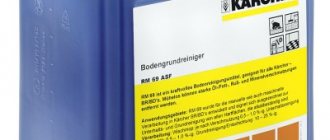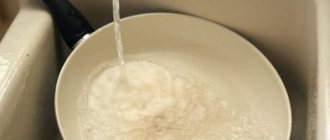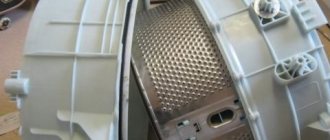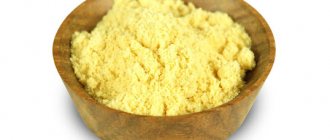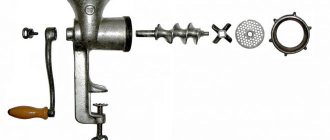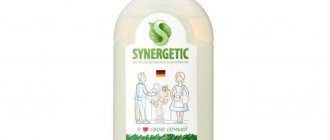Home / Kitchen cleaning
Back
Published: March 28, 2020
Reading time: 9 min
0
33
- 1 How to remove stains in a saucepan
- 2 How to wash stainless steel dishes: a review of traditional methods 2.1 Using soap
Causes of pollution
Stainless steel is resistant to environmental influences, which is due to the chromium content in the material. This element creates a protective layer that protects the surface from corrosion, rust, and blackness.
However, improper maintenance results in significant accumulation of dust, dirt and grease. They destroy the protective properties, make stainless steel vulnerable and reduce its wear resistance. Rust, soot, and deposits appear on the surface, and the characteristic metallic sheen of the material disappears. As a result of such contamination, the device or item becomes unsuitable for further use.
How to clean a saucepan with household chemicals
To remove old dirt and grease from the walls of a pan, not only traditional methods, but also modern detergents will help.
After use, it is necessary to wash the pan in a sufficient amount of running water with the addition of a gentle detergent.
Abrasive powders are dangerous because they can scratch metal surfaces, but they can be used as a solution by mixing with boiling water. In this case, they are quite effective.
Proper washing will prevent unsightly dark spots and streaks from appearing on the walls and bottom of dishes.
Cream products show good results, especially if you soak stains with them. But with heavy soot they are not always effective.
General cleaning recommendations
Stainless steel cookware should be cleaned as often as possible to avoid darkening of the metal, the appearance of persistent greasy stains or carbon deposits. For cleaning, use available home remedies or special household chemicals.
Steel objects should be washed with foam sponges, washcloths, and soft brushes . Metal scrapers and other abrasive tools leave unsightly scratches, so use them only as a last resort.
Before cleaning, sort all items according to two characteristics: by purpose (pots, pans, cutlery) and by type of contamination (grease, carbon deposits on the outside, dust, etc.). This will allow you to choose the most suitable cleaning method, saving time and effort.
How to clean a stainless steel hood and sink
The following products and methods are suitable for cleaning a hood or kitchen sink:
- Use special medications. Before using household chemicals, read the instructions and follow the recommendations.
- Wash the surface with a solution made from lemon juice and water.
- Apply vinegar to a soft cloth and wipe all surfaces thoroughly. Wash the hood or sink with clean water and then wipe dry.
- Combine baking soda and mustard powder in equal proportions. Apply the mixture to the stainless steel with a sponge and rub well to remove dirt.
- Peel the potatoes, cut them in half and grate all surfaces. This method will return shine and shine to steel objects.
Home remedies for cleaning stainless steel cutlery
The simplest product for cleaning stainless steel is dishwashing gel . Wash spoons and forks thoroughly using a soft foam sponge and the selected preparation. After cleaning, rinse the appliances under running water and wipe dry so that no white streaks remain.
Other cleaning methods:
- toothpaste or toothpaste to a cloth and rub it over all forks, spoons and knives. Rinse items under running water and dry on a towel.
- Prepare a liquid solution based on water and mustard powder . Soak a sponge in the liquid and treat all products.
- To get rid of dark tea stains, soak in vinegar and wipe the utensils. To remove stubborn stains, soak the items in a vinegar solution for 10-20 minutes.
- ash will help clean cutlery outdoors .
Are stains on the bottom of a stainless steel pan a defect?
It’s best to just accept their presence, and to prevent them from appearing in new dishes, just don’t leave them empty on the fire. Small light spots are also not a defect. This is ordinary scale, that is, a precipitate of calcium salts.
They are found in tap water and settle to the bottom when boiling.
Since the surface of steel appears perfectly smooth only to the eye, tiny particles of salt cling to microscopic irregularities (for example, scratches formed when washing with a sponge) and gradually attach to each other, which is why the specks seem to increase over time.
Getting rid of them is very simple - just thoroughly rub the problem area with a hard sponge. Dark stains on stainless steel are a much more interesting case. The fact is that tap water, especially if you are used to using unfiltered water for cooking, contains not only calcium salts, but also silicon.
Effective Ways to Clean Steel Pans
Stainless steel pans are susceptible to various stains, but burnt food and persistent greasy deposits are more common. Home remedies will help you wipe off stains quickly and easily.
Lemon juice
Lemon juice will help remove grease from the pan:
- In a container, mix 1 tbsp. l. juice and 1 glass of water.
- Dampen a soft sponge in the solution and treat all surfaces with it.
- Rinse away any remaining dirt with running water.
- Wipe the pan dry with a soft cloth. To add shine, polish it with a piece of flannel.
Aromatic coffee will help get rid of burnt and greasy stains. Apply a small amount of ground coffee powder to a damp sponge and gently scrub the stained areas. After removing stains, rinse the pan with clean water and dry naturally.
Activated carbon
The following method will help you cope with the remains of burnt food:
- Fill the bottom of a still warm container with crushed activated carbon or table salt so that the product covers the dirt.
- Leave the pan for 30 minutes.
- Wash the container with a sponge using dishwashing detergent, and then rinse with a solution of lemon juice.
To make the pan shine and shine, after cleaning, wipe the surface with a cloth moistened with a solution of ammonia (1 drop per 1 liter of water). This method is applicable not only for dishes, but also for any stainless steel surfaces - hood, kettle, stove or sink.
Decarbonizers for pots and pans
The hostess gaped - the food was burnt! Is the story familiar? And, alas, it is not always possible to clean a stainless steel pan from sticky carbon deposits at the bottom of the vessel in one go. It is precisely for such cases that, through trial, error and experimentation, our mothers and grandmothers invented cleaning methods with the simplest ingredients that we have at home. So, the following folk remedies will help against sticky blackness.
- Pour ¼ water into the burnt dishes and add grated laundry soap (½ bar) into it.
- Place the dishes on the fire and boil the mixture for ten minutes.
- Drain the soap solution.
- Add two tablespoons of baking soda and use a circular motion to remove any carbon deposits.
- Tablets from two or three packs of activated carbon should be crushed into powder and mixed with water to form a paste.
- Apply the resulting composition to areas of persistent staining on the dishes and leave for 20 minutes.
- After a third of an hour, with the addition of soda, clean up the burnt areas.
- Pour water (8 l) into a large saucepan or tank.
- Pour 100 g of soda into a container and pour in 80 g of silicate glue.
- We immerse the dishes with carbon deposits in the resulting solution.
- Boil for 40 minutes and turn off the heat.
- Leave the dishes in the composition until the liquid cools.
- We clean the remaining areas of contamination with a brush or soda.
Do not confuse PVA glue with silicate glue. The latter is a popular transparent adhesive, popularly known as liquid glass. And it is this glue that is suitable for cleaning dishes from carbon deposits.
Preventing contamination
To extend the life of stainless steel products, follow the rules for care and cleaning:
- Thoroughly clean off fat and food residues after each cooking;
- During cooking, make sure that the food does not burn to the bottom;
- do not use abrasive compounds or hard tools - they will leave scratches and damage the top protective layer;
- wipe dishes, utensils and surfaces after use to prevent oxidation and avoid streaks and deposits;
- Polish the metal periodically using baby oil or olive oil.
Russian stainless steel pots are the best!
The heat distribution layer is made of aluminum alloy, similar to the domestic A5 brand. The method of manufacturing the bottom capsule is diffusion welding (impact bottom).
The thickness of the wall of the container and the lid is 0.8 mm, the thickness of the plate covering the bottom capsule is 0.5 mm. The effective thickness of the aluminum TPC at the center of the bottom is 6.2 mm, at the edge of the bottom - 7.7 mm. The instructions supplied with the product indicate the following information: “The thermo-accumulating compact bottom of our cookware is made of multi-layer light metal with a thickness of 10 mm.”
In fact, the heat distribution bottom is a solid sheet of aluminum (no multi-layering), with an initial thickness of no more than 8.0 mm (before the diffusion welding process). The instructions contain a rather strange text: “The walls of the cookware have a thickness that maintains an operating temperature of 90C.” - it’s funny, they believe in it, these are dishes “that cook after turning off the stove”,
Video
To familiarize yourself with the nuances of cleaning stainless steel items, watch the following videos:
Young mother, wife and part-time freelancer. Being a lawyer by training, I am accustomed to collecting and providing the most complete and reliable information. Constantly improves in the professional field and strives for personal growth and development.
Found a mistake? Select the text with the mouse and click:
Threads made of gold and silver, which were used to embroider clothes in the old days, are called gimp. To obtain them, the metal wire was pulled for a long time with pliers to the required fineness. This is where the expression “to drag out the rigmarole” came from - “to do long, monotonous work” or “to delay the completion of a task.”
If your favorite things show the first signs of gestation in the form of untidy pellets, you can get rid of them using a special machine - a shaver. It quickly and effectively shaves off clumps of fabric fibers and returns things to their proper appearance.
The habit of using an automatic washing machine “sparingly” can lead to the appearance of an unpleasant odor in it. Washing at temperatures below 60℃ and short rinses allow fungi and bacteria from dirty clothes to remain on internal surfaces and actively multiply.
Before removing various stains from clothing, you need to find out how safe the selected solvent is for the fabric itself. It is applied in a small amount to an inconspicuous area of the item from the inside out for 5-10 minutes. If the material retains its structure and color, you can move on to stains.
There are special traps to combat moths. The sticky layer with which they are covered contains female pheromones that attract males. By sticking to the trap, they are eliminated from the reproduction process, which leads to a decrease in the moth population.
Stretch ceilings made of PVC film can withstand from 70 to 120 liters of water per 1 m2 of their area (depending on the size of the ceiling, the degree of its tension and the quality of the film). So you don’t have to worry about leaks from neighbors above.
The easiest way to remove scale and carbon deposits from the soleplate of the iron is with table salt. Pour a thick layer of salt onto the paper, heat the iron to maximum and run the iron over the salt bed several times, applying light pressure.
Fresh lemon is not only suitable for tea: clean dirt from the surface of an acrylic bath by rubbing with half a cut citrus, or quickly wash the microwave by placing a container of water and lemon slices in it for 8-10 minutes at maximum power. The softened dirt can simply be wiped off with a sponge.
The dishwasher cleans more than just plates and cups. You can load it with plastic toys, glass lamp shades and even dirty vegetables, such as potatoes, but only without using detergents.
Source
Why doesn't stainless steel rust?
Let's start with the basics. Any steel is not just one metal in its pure form, but an alloy consisting of an iron “base” and various additives, and not always metal ones. In fact, additives make it possible to give the alloy the necessary properties, for example, strength, ductility and resistance to rust. Metal rusting is a natural chemical process that occurs when iron comes into contact with water. Moreover, it is not necessary to constantly pour water on a metal product, since its smallest particles are always contained in the air.
In order to prevent contact of steel with moisture, its surface is covered with varnishes, paints and enamels. If you have an old enamel plate or pan in your household, you will notice that the place where the enamel broke off due to an impact quickly begins to become covered with a brown coating. There is another approach - you can act “from the inside”, that is, add metals to the alloy that do not react with water. These include, for example, chromium and nickel. Actually, it is to them that stainless steel cookware owes its beautiful shine.
It works as follows: under the influence of atmospheric oxygen, a thin oxide film is formed on the surface of the alloy. It is not completely transparent, but due to its extreme thinness it is not possible to see it, so it seems to us that the metal is not covered with anything. The film has the property of self-healing (contact with oxygen does not stop for a second), so even deep scratches do not become a source of rust.
How to clean stainless steel from dark stains
Despite the fact that this type of metal is quite durable, cleaning a stainless steel sink is not so easy. Since the material is very capricious, it requires daily care. Regular cleaning will help prevent the accumulation of fats and dirt, which are the culprits of the specific aroma and the appearance of various bacteria on the walls of the sink. In order not to spend a lot of time on cleaning, every housewife should know which products to use that will help achieve quick and effective results.
Useful tips for the care and prevention of stainless steel pans
How to care for non-keeled and stainless steel cookware in order to bother with “general” cleaning as little as possible? If you believe the reviews of professional housewives, the dishes will retain their ideal appearance and performance for decades, provided that the following six rules are followed.
- Wash immediately. Try to clean dishes from grease, grime and food particles immediately after use. In the case of persistent stains, the dishes should be soaked and only then washed with gentle sponges and stainless steel cleaners.
- Warm food, not dishes. Do not leave empty pots and pans on the fire for a long time to prevent rainbow stains.
- Choose “good” water. Use filtered water for cooking and boiling water, which will protect steel utensils from the appearance of scale and salt and lime deposits.
- Avoid sudden temperature changes. Despite the fact that steel has high heat resistance parameters, you should still not expose the cookware to sudden temperature changes to avoid its deformation. Do not pour ice water into a hot pan. Do not place a pan directly from the refrigerator on a very hot burner.
- Use a soft clean. It is best to clean stainless steel cookware using delicate products, avoiding aggressive compounds and abrasives.
- Dry with a towel. To avoid water stains, it is better to wipe stainless steel dishes dry after washing.
We suggest you read How to clean silver at home
Today there are a lot of products that can clean dishes even from the most persistent and long-term stains. “Shumanit”, “Shine of Steel”, “Help” and many other popular and not so popular brands with a thermonuclear composition can be found in a household chemical store. But do not forget that the dishes have direct contact with food and exposing a pan or spoon to such a chemical attack is quite dangerous.
Cleaning: what is special?
A stainless steel sink is very aesthetically pleasing and beautiful to look at, but is difficult to maintain. This is the most versatile and frequently used type of kitchen equipment. Easily fits into any interior. However, despite all the inherent advantages of a bowl-shaped device, there are also several disadvantages in using stainless steel sinks:
- small scratches, marks and stains on its surface are always noticeable;
- poor sound insulation;
- predisposition to oxidation;
- various negative reactions to cleaning products.
To keep your sink in good condition, you need to take care of it and do general cleaning at least once a week. This will not only give the kitchen an aesthetic appearance, but will also protect the whole family from various diseases.
I bought a Nika saucepan, there were black spots on the bottom, how do I return it?
- demand replacement with a product of the same brand (same model and (or) article) - demand replacement with the same product of another brand (model, article) with a corresponding recalculation of the purchase price - demand immediate free elimination of defects in the product or reimbursement of costs for their correction by a consumer or a third party. The Seller has the right to check the quality of the goods. The time frame for consideration of your claim depends on the stated requirement: - termination of the contract - 10 days (Article 22 of the Law on ZPP) - repair - 45 days (Article 20 of the Law) - Replacement for a similar one - 20 days (Article 21 of the Law of the Russian Federation) Metal utensils Stainless steel utensils. Info Pots are suitable for use on all types of kitchen surfaces - gas, electric, ceramic, induction.
Induction Technology guarantees instant heat distribution over the surface, ensuring even heating of food.
How and with what can I wash it?
To keep your sink looking new and tidy for a long time, you should wash it daily. Steel is in constant contact with water, fats and other kitchen contaminants. This effect contributes to the darkening of the material and the appearance of a white coating on the surface of the sink. Daily cleaning is carried out using cleaning products, which can be replaced with regular dishwashing detergent and a soft sponge. The device for washing household utensils and other items must be treated after each use. To do this, apply detergent to the surface of the sink and wipe thoroughly with a washcloth. Then wash the walls with clean water and wipe dry.
We fight limescale and scale in the kettle
To get rid of white limescale on the surface of the kettle, you need to call for help with acid. This can be either diluted vinegar or citric acid. If stains persist, treat the surface of the dishes using steel wool and stiff brushes. But adjust the pressure to avoid leaving scratches.
How to remove salt deposits inside the product, as well as remove scale in a stainless steel kettle? You can deal with deposits caked on the heating element and the walls of the cookware using:
- coca cola;
- vinegar (9%);
- citric acid diluted with water.
Any of the selected components must be poured into the kettle in such a volume that the heating element is covered with liquid, and boiled for one to two minutes.
The concentration of citric acid depends on the degree of contamination of the dishes. For minor scale, you need to take one pack of citric acid (15 g) per 0.5 liter of water. If mineral deposits have accumulated over the years not only on the heating element, but also on the walls of the container, then you can dilute 3 packages of powder in 1 liter of water.
The described methods are suitable not only for processing teapots. They are also the answer to the question of how to wash samovars, Turks, and stainless steel cups. That is, any containers in which water often stagnates or boils.
What is prohibited to use?
To avoid damaging the integrity of the stainless steel sink surface and leaving a number of unsightly scratches on it, you should not use abrasive substances. Metal brushes will damage the structure and scratch the stainless steel coating. Products containing ammonia can leave dark oxidized traces. You should also exclude whiteness, and if you still cannot do without it, monitor the time of its interaction with the stainless coating. The product should be washed off immediately after immediate cleaning.
Free legal assistance
So I’m thinking: should I throw it away or can I still revive it? Uncle March 19, 2007 16:56 I would like your concerns....
Chocolate March 19, 2007 17:26 Well, no, wait, Uncle, if it rusts, then all this will go into my soup, and this is no longer good. So I’m interested in what people will tell me about possible resuscitation. Meanwhile, I’m taking a closer look at the saucepans with steamer inserts. Esmarhov March 20, 2007 00:11 In a bucket... Or cook for those who have a lack of iron in their bodies.
We recommend reading: Federal law on benefits for veterans of combat operations in Afghanistan
Well, or paint it again. Enamel. Just treat it with anti-rust first Kati March 20, 2007 11:04 It wasn’t... Is it possible to buy it somewhere separately?
Whose production? Otherwise I’m already tormented with spots... Svetlana, sorry, I just saw your post.
It is important that you MUST accept goods of inadequate quality from the consumer and, if necessary, check the quality of the goods.
The consumer has the right to participate in checking the quality of the product.
Removing plaque from the sink with detergents
Stainless steel sinks are coated with a protective film of chromium oxide, which prevents corrosion and tarnishing of the metal. However, the integrity of this layer is damaged under the influence of food fats and dyes. The admixture of lime in the water forms a coating on the walls.
To increase the service life of the sink, you need to clean the surface in a timely manner. Depending on the level of contamination, stainless steel can be treated with mild detergents or traditional methods can be used.
The option using Anti-grease is suitable for removing minor stains and daily preventive maintenance of the protective layer of the sink. For the procedure you will need:
- dishwashing gel;
- nylon washcloth;
- glass cleaner;
- towel.
After each use of the sink, it is enough to apply a few drops of the gel on a nylon sponge and wipe the surface from grease, and remove excess soap suds with a damp cloth. Such prevention will prevent serious contamination and the formation of limestone.
To achieve the initial shine, the surface of the sink should be sprayed with glass cleaner. For ease of application and handling, use a microfiber cloth, then wipe everything with a dry towel.
Stainless steel is sensitive to abrasive materials. Steel wool or stiff brushes can leave scratches that only a professional can remove.
If the stains do not respond to a soft washcloth and detergent, then another way is needed in the fight against dark stains and limescale.
How to remove stains in a saucepan
Stainless steel cookware is truly a great purchase. And it is no coincidence that it is in high demand among housewives. Its advantages are its aesthetic appearance, strength and durability.
However, during use, multi-colored spots may appear on it.
Often stains appear immediately after the first boil or during the initial period of use. Possible sources of the problem:
- high level of water mineralization (varies depending on the region);
- prolonged overheating of dishes.
The first reason is explained by the precipitation of mineral salts during the cooking process. At the bottom of the product there is a concentration of these substances in the form of spots. And over time, their size and density increase.
Elevated temperatures cause stains to appear. This happens if you leave the dishes on the fire without liquid for a long time.
Color stains do not affect the quality of food and do not form harmful impurities. The only question is the aesthetic appearance of the pans.
This depends on the manufacturer: for example, Chinese products are attractive in price, but are inferior in quality to expensive European counterparts.
The key feature of rainbow stains is that they are simple and easy to remove.
- Add a weak solution of acetic acid to warm water and pour into a saucepan. Use a soft sponge to thoroughly clean the surface. Rinse off and then wipe dry with a dry towel.
- Use a sponge or soft brush with a warm solution of citric acid. The product is processed, washed and dried.
Both the first and second methods are equally effective.
Traditional methods for removing plaque and stains from the sink
When a regular washing gel cannot cope with stains, you can use improvised means that you can always find at home or in the store. If you don't clean your sink daily, you'll end up dealing with dark stains, limescale, and greasy residue. Using folk recipes will help clean your sink and prevent serious contamination.
Removing black stains from a stainless steel sink
No matter how well the surface of the sink is cared for, over time the metal begins to darken and black spots appear on it. It's all about food oxidizing agents.
Rules for caring for a stainless steel sink
To avoid severe contamination on the surface of the sink, it requires daily care and effective cleaning products. Here are a few rules that will help preserve the protective layer of metal:
- Do not use aggressive cleaning agents for cleaning. Exposure to strong acids and alkalis negatively affects the protective layer of stainless steel.
- Do not use abrasive materials to remove plaque. Iron wool leaves micro scratches in which microbes accumulate, causing the sink to begin to rust.
- Place a mat on the bottom to trap grease and dirt. It is also useful to install a strainer on the drain to collect food waste.
- After finishing washing dishes, rinse the sanitary ware with hot water and wipe dry.
- Clean daily with detergent to remove grease and limescale.
- Do not leave soft wire washcloths at the bottom. The metal begins to oxidize, causing rust stains that will be difficult to remove.
- Do not use sharp objects to remove limestone or other contaminants.
Any sink requires care and timely cleaning. It is important to carry out preventive maintenance daily or once a week by treating the surface of the plumbing fixtures and drains. This will eliminate the need for deep cleaning. The sink will always shine and will last for decades. https://
Source
How to wash stainless steel dishes: a review of traditional methods
Stainless steel cookware is durable, inexpensive and very practical; it is used everywhere in every family. But over time, such dishes lose their appearance and darken, and due to frequent use, traces of soot, blackness and dirt remain on them, which cannot be cleaned.
How to remove these traces? Effective and time-tested folk methods will help.
Stainless steel pans are loved by many housewives. This cookware looks beautiful and expensive, and its shiny surface attracts the eye and creates a feeling of cleanliness and order in the kitchen at home.
If carbon deposits settle on the outside of the pan, it creates the impression of sloppiness in relation to cleaning dishes and cleaning the house.
In addition, stainless steel is a durable and reliable material, ideal for cookware with frequent use. Such a pan is strong, durable and can last for more than one generation of housewives, especially with proper care and proper use.
Light stains on the pan can be removed with detergents.
Over time, scale, burnt marks, dark spots and rings, blackness, and old grease appear on a metal pan. All these contaminants not only do not decorate the dishes, but also lead to their rapid deterioration.
Let's look at how to clean a burnt stainless steel pan, and what cleaning methods exist for different cases.
The best way to easily clean the inside of an old or burnt stainless steel pan is to boil it. Boiling water will help to effectively clean the inside of dishes and even get rid of very old dirt, soot and greasy deposits.
Minor stains on a stainless steel home pan that arise during the cooking process can be easily removed with a mild detergent.
For greater efficiency, it is worth adding soda and salt, laundry soap, and vinegar to this water. This method effectively removes dirt and helps restore shine and cleanliness to the pan.
Another effective “grandmother’s” way to effectively clean a dirty stainless steel pan at home is heating it with salt. This type of cleaning is effective for cleaning the inside of the saucepan and for light soiling.
Salt will help get rid of many impurities.
If the contamination is strong and overheating with salt does not help, you can add soda, soap and water in addition to salt, and boil for an hour. This procedure will definitely be effective.
The dirty bottom of the saucepan can be easily washed by boiling. Pour water into it and add baking soda, grate a piece of laundry soap and add table salt.
Boil the mixture for an hour; you can soak the dishes in the solution overnight.
There is no need to clean or scrub; after this procedure, all dirt, carbon deposits, grease and soot will disappear after a simple wipe with a sponge. Boiling is effective even with old stains and burnt sugar or burnt jam, which is so difficult to remove.
A good method to clean burnt stainless steel dishes not only from the inside, but also from the outside is activated carbon. It absorbs dirt and grease well, leaving you clean and shiny.
You can get rid of accumulated carbon deposits by using activated carbon.
You need to crush a couple of packs of coal in a mortar and mix with water to form a thick mass. You can use a blender, only then you will have to wash it thoroughly. This mixture should be used as a regular detergent: apply to a sponge and wash dishes.
We suggest you read: How to clean a burnt pan from jam at home, how to remove fumes
If food is burnt inside the saucepan or the dishes are blackened, an excellent cleaning method is whey or sour kefir. The acid in the dairy product dissolves old grease and dirt and helps achieve complete cleanliness.
Whey is one of the effective means of cleaning dishes.
Pour whey or kefir into a saucepan and leave overnight, and in the morning boil with clean water and simply wash with a sponge.
If your pan is burnt, do not rush to clean it with harsh cleaning agents: you may damage the metal. You can wipe off dirt and burnt marks with home remedies: vinegar and soda.
Using vinegar, dishes can be cleaned until they shine.
A solution of vinegar or soda should be used separately. Vinegar is effective if you need to remove old fat - acid dissolves it perfectly. Soda works well with scale, soot, soot and lime. In both cases, you need to make a solution and boil for an hour, then wash with detergent or soap.
We use soap
If food is burnt or milk is burnt, laundry soap will help clean it. Grate a bar of soap on a coarse grater, add a couple of tablespoons of soda and boil this solution for an hour and a half, adding water if necessary.
One of the best ways to clean dishes is to use soap.
The solution will turn black because all the dirt will come off the dishes. After boiling, scrub the dishes with a hard sponge and rinse with water.
Citric acid is an effective tool for removing burnt marks and old fat from stainless steel. A tablespoon of acid will do per liter of water; you can also add vinegar for greater effect. If the contamination is not severe, or the metal has become tarnished, you can wipe the dishes with a sponge soaked in an acidic solution.
Citric acid will help get rid of soot and scale.
If the inside and outside are heavily soiled, you should boil the pan in this acidic solution, and then wash off the remaining dirt with water and detergent.
Burnt and scorched marks will go away if you use baking soda and peroxide. Instead of peroxide, you can use ammonia. A few drops of the product, water, a pack of soda - and the detergent is ready. If there is strong burnt soot, you should soak the dishes in this solution overnight and then boil for half an hour.
This method can be used for scale and old stains both outside and inside the pan.
If your cookware is dark or dull, use coffee grounds. The main thing is not to rub too much so as not to scratch the metal surface.
Brew coffee or simply pour boiling water over it and leave to swell for 10-15 minutes. Then rub the surface of the dishes with this thickener using a sponge with light movements, without excessive pressure. After this procedure, the dishes shine like new.
The original “grandmother’s” method of cleaning dishes is with stationery silicate glue. It adds shine, removes darkened layers and scale and returns the dishes to their original appearance.
Mix glue with water and soak the dishes in this solution for a couple of hours.
After this, wash the pan with vinegar or citric acid and rinse in running water. Your pan is like new!
When using stainless steel cookware, follow simple rules.
- Wash dishes immediately after use to prevent dirt from being absorbed into the metal surface.
- If something is burnt or stuck, immediately soak it in water, boil it and wash it, do not leave it like that.
- Wash dishes thoroughly and always with detergent, even if they need to be rinsed lightly. Contamination is often invisible to the eye and appears gradually.
- Always wash the outside of the saucepan thoroughly, paying special attention to the bottom, handles, folds and depressions - where old dirt most often accumulates.
- Try to take care of the dishes, do not scratch them with metal spoons, and do not put them on too high a fire.
Keep your cookware clean and take care of it, and it will serve you for many years!
If the dishes get dark - no problem! A stainless steel article is any type of iron-carbon alloy with the addition of chromium, which creates a protective, self-renewing anti-corrosion film on the metal surface. High-quality chrome-nickel steel alloy marked X18N10 (8/10) is used for the manufacture of cookware.
Today, the range and scale of production of steel chrome-nickel cookware is incredibly extensive, thanks to its positive distinctive qualities. Of these, four main ones can be distinguished.
- Heat resistance. Steel 18/10 retains its nominal qualities over a fairly wide temperature range. This allows you to use such dishes equally effectively both at negative temperatures, for example, in the freezer, and at high temperatures - in the oven.
- Wear resistance. Steel alloy is one of the strongest and toughest. Such dishes are resistant to deformation, scratches, chips and other mechanical damage, which is very important in everyday life. Steel pots and pans can be used when cooking on different types of stoves: gas, induction, glass-ceramic.
- Corrosion resistance. High resistance to moisture, acids and alkalis makes steel an ideal choice for making tableware, because kitchen utensils are most susceptible to the aggressive influence of food acids, detergents and liquids.
- Hygiene. The high density of the metal and polishing of stainless utensils to a mirror shine makes them resistant to the accumulation and spread of harmful microorganisms. In addition, numerous studies have proven the bacteriostatic properties of steel, that is, its ability to prevent the development of pathogenic microbes.
We suggest you find out how long you can store minced meat in the refrigerator


